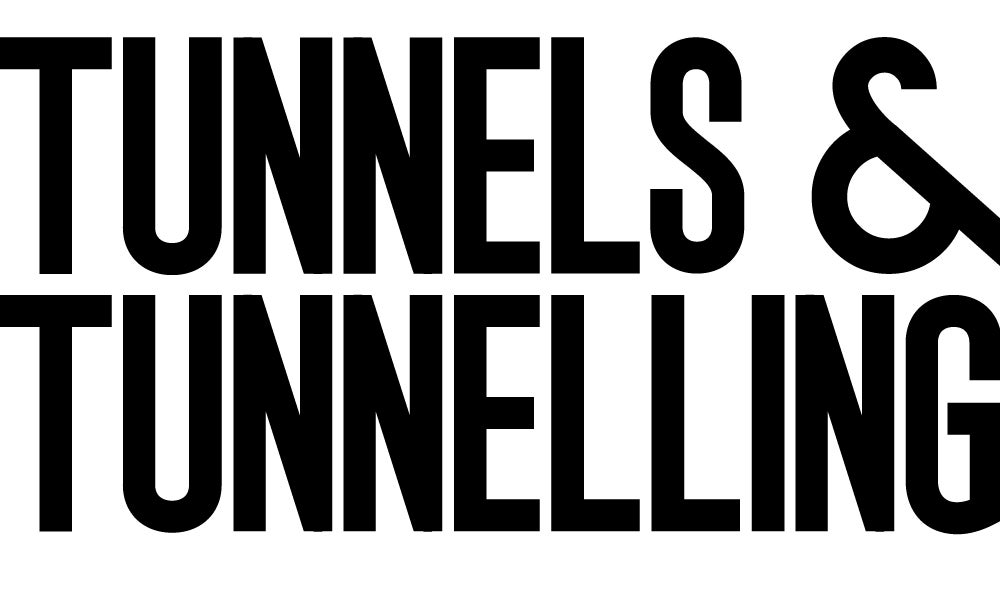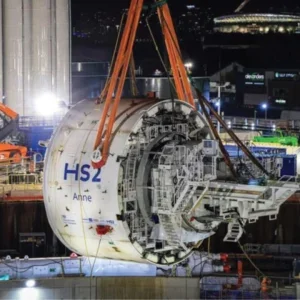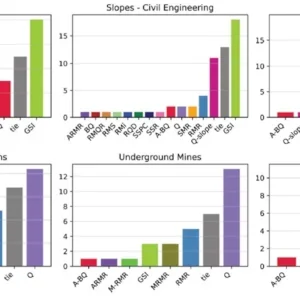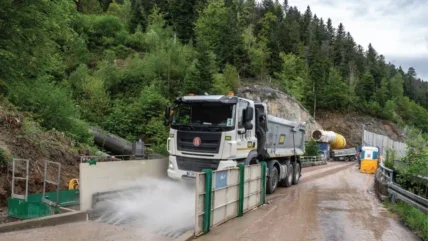
The Rudolph Fettweis power plant in Forbach, Baden, Germany, is a hydropower facility of many parts and the complex is being expanded further, with more tunnels and new generation technology.
More than 100-years old, the power plant has played a key role in energy supplies and the economy of the region. The plant owner, EnBW Energie Baden- Wurttemberg, is now stepping up the facility’s pumped storage capability with further tunnels and caverns. The strategy is in response to the growing and varied demands upon the electricity grid.
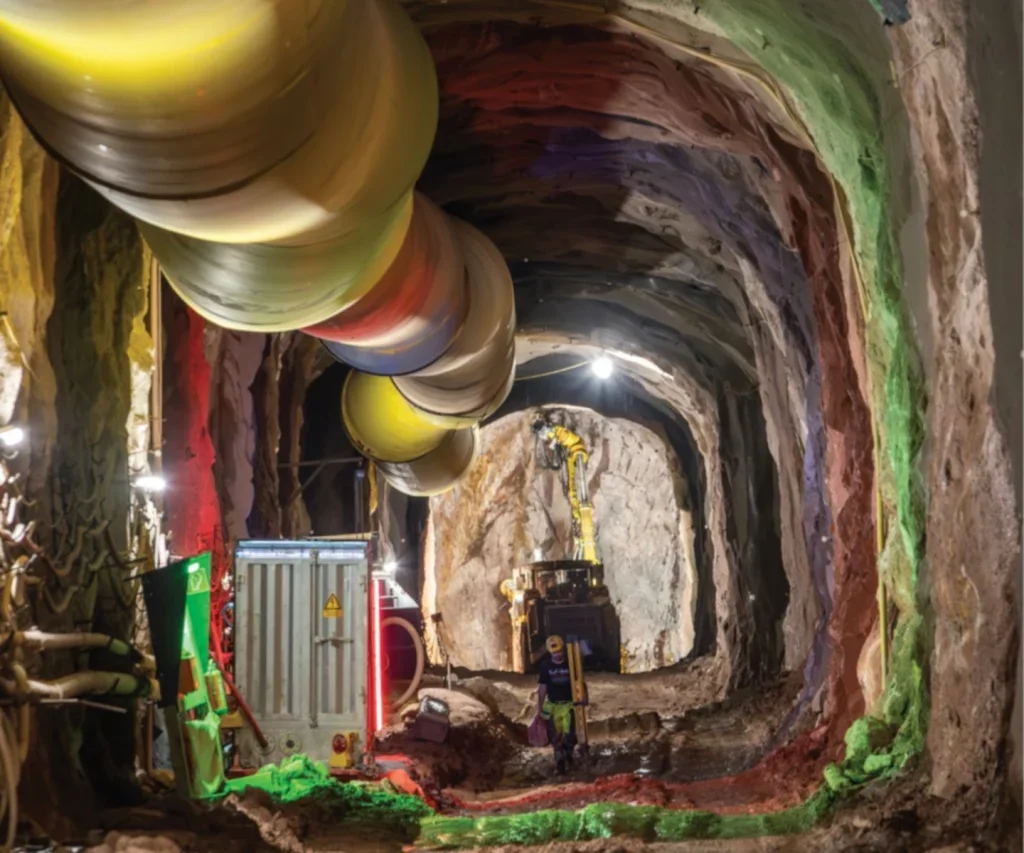
With more non-hydro renewables such as wind and solar comes more variability in generation output, which needs countered in two ways – fill the gaps in generation and do so exceedingly fast; and, help to maintain the operational stability of the grid amidst so much variation, which can for example affect maintenance of electricity frequency. Pumped storage hydropower is a proven solution to quickly satisfy both needs. This form of hydro exploits two bodies of water at sufficiently different elevations, and moves flows between them. It is, in effect, a gravity-charged hydraulic system.
The creation of pumped storage hydropower facilities typically combines mechanical and electrical equipment with major civil engineering infrastructure – often including underground works, which in the case of Forbach are both old and new.
Excavations are well underway on the new Forbach tunnels and more than half of the tunnelling work has been completed.
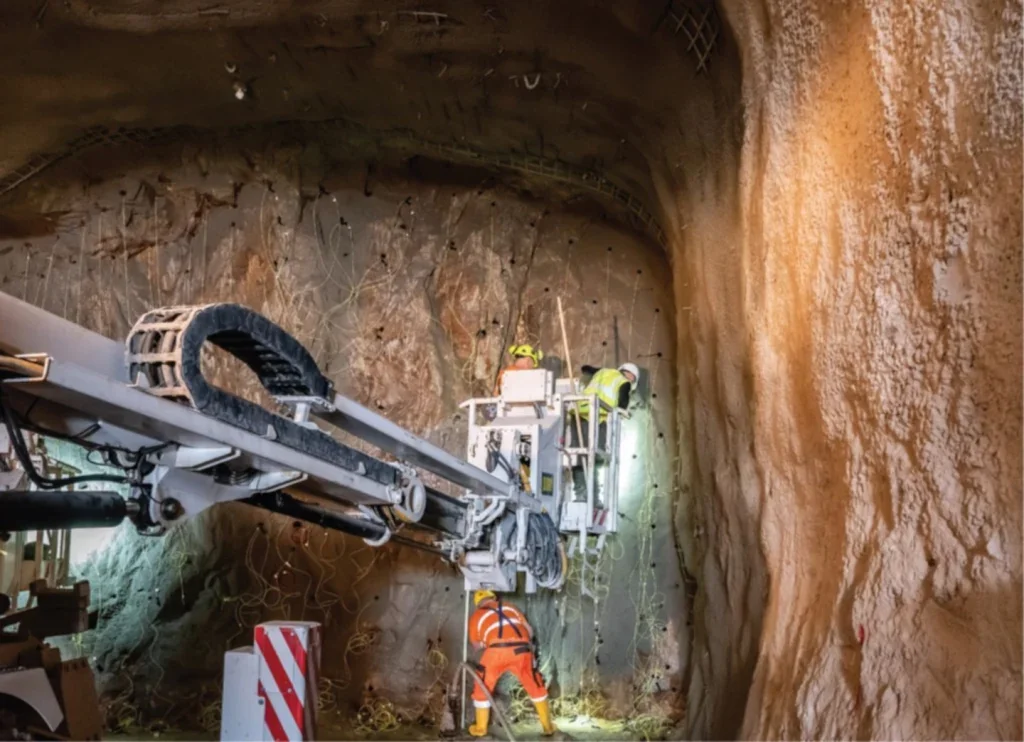
PROJECT PLAN
Feasibility studies began almost 20 years ago, over 2007-9, to allow EnBW to examine options to further develop the Forbach hydro site. Planning followed, considering upper and lower reservoir scenarios, until the owner submitted a planning application for the modernisation, conversion and expansion works in 2018.
Planning approval then took five years to achieve, and was awarded in early 2023 by Karlsruhe Regional Council.
The utility’s project manager, Ulrich Gommel, said of the project milestone at the time, in a statement: “We have worked extensively with the relevant authorities to meet the diverse requirements for a complex construction project of this kind.”
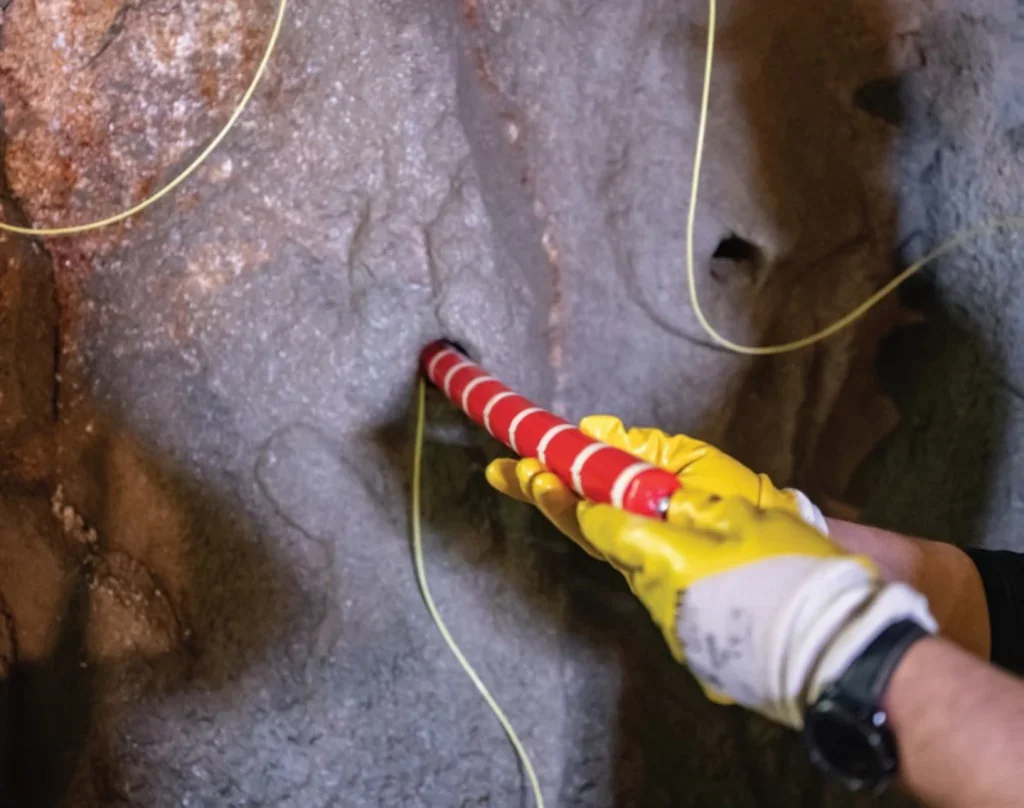
Even with approval, as with many other energy sector projects these days, a final investment decision still needed to be made by the owner, to decide if the particular economic and financial conditions were still suitable to proceed. With such a greenlight, construction might start in early 2024 for a planned finish of late 2027.
Soon after obtaining the planning approval, in May 2023 the owner gave the go-ahead – looking for works preparations and procurement, and wanting the same completion deadline to be met. The total cost of the project was put at approximately €280 million (US$304 million, £246 million – 2023 currencies).
First excavation started in April 2024, although it was not until June that the ceremonial handover of the statute of St Barbara took place and blasting began for the main access tunnel on the Forbach project.
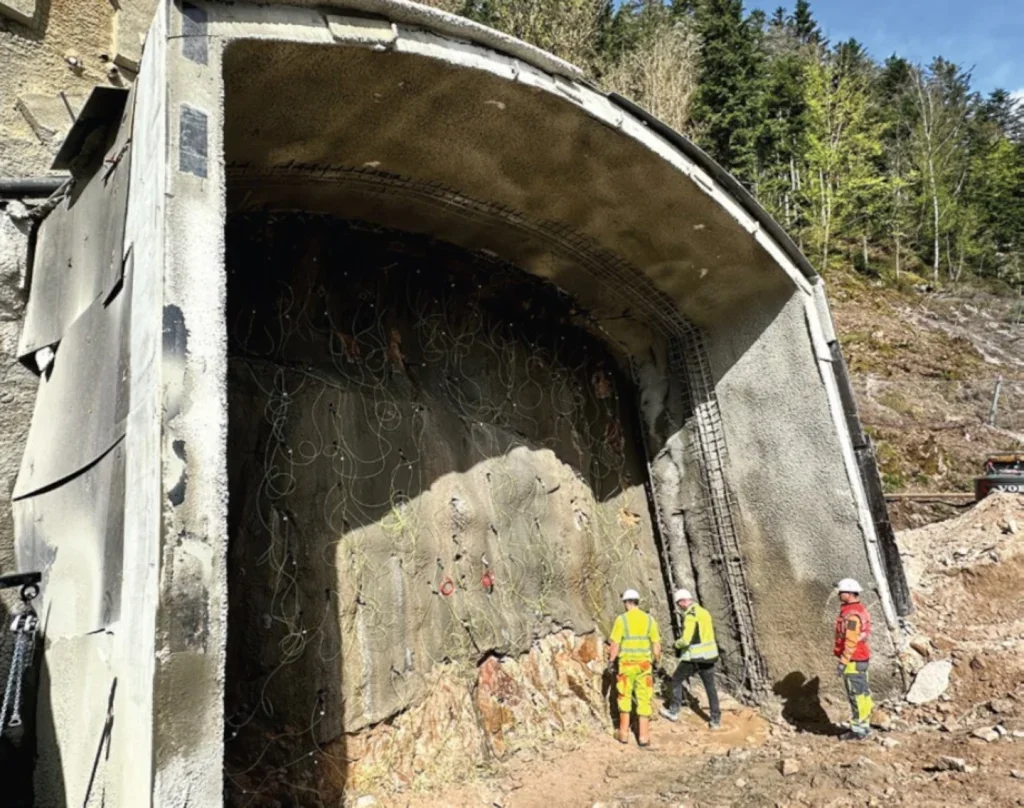
Much of the project involves tunnelling to create new water conveyance tunnels, caverns for a new underground powerhouse, and also storage caverns for water – which the owner says is unique in German hydro.
The arrangement of the new tunnels is, upstream, to take water from two different reservoirs and convey the flows, separately, for operational reasons, to opposite ends of the new powerhouse cavern. The reservoirs to be tapped are the Kirschbaumwasen and Schwarzenbach, respectively.
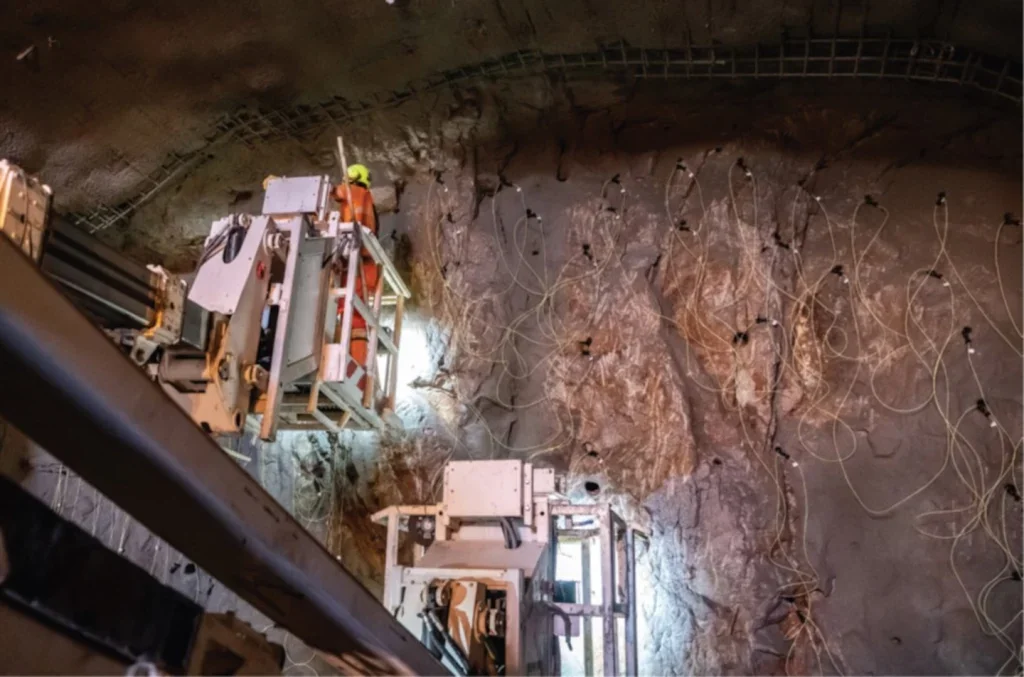
The powerhouse cavern will take their separate inflows and, with generation equipment dedicated to each, produce electricity. The Kirschbaumwasen inflows will pass specifically and only to three new dedicated Francis turbines in one section of the new powerhouse cavern; the Schwarzenbach inflows will pass, again down that dedicated route, specifically and only to its own part of the powerhouse, to a new pump-turbine.
Flows from all equipment will discharge into the tailrace tunnels. Then, downstream of the powerhouse, the outflow waters will pass through further tunnels and also storage caverns, eventually to be discharged into the river.
However, the discharge will be delayed as the caverns are to hold sufficient water to act an effective ‘lower reservoir’ to Schwarzenbach reservoir, which will be the ‘upper reservoir’ in a pumped storage pairing. The Schwarzenbach pump-turbine will push the flows back up through the dedicated connecting tunnel, at suitable times.
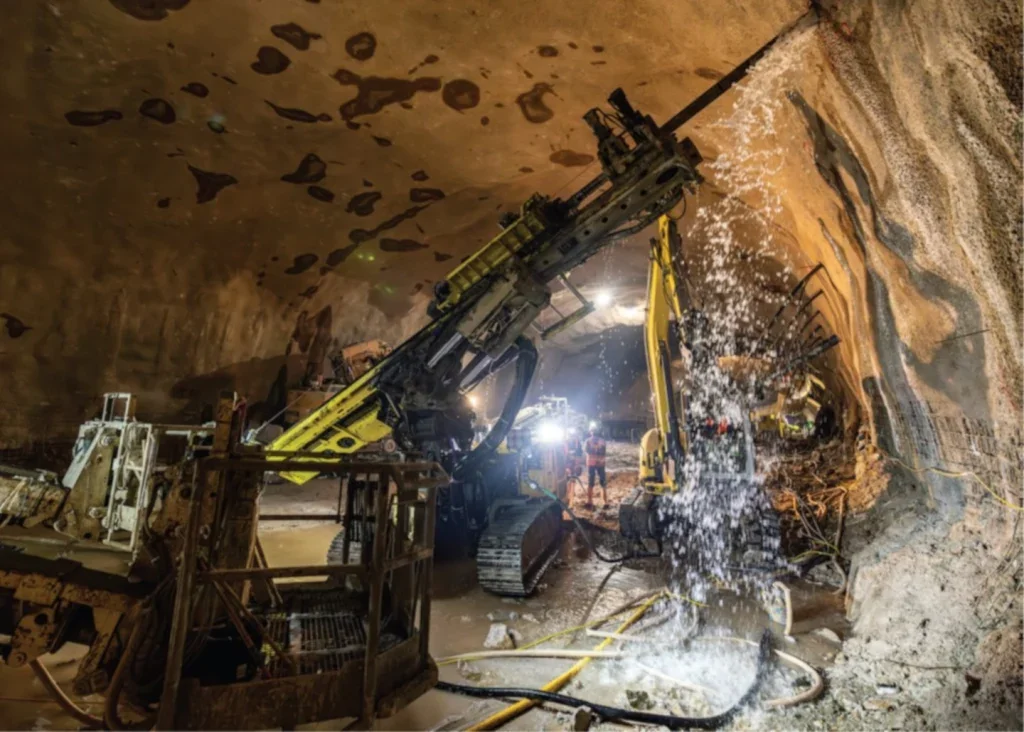
CONSTRUCTION
Porr Tunnelbau is undertaking the main construction work on the project, under the Lot 2 civils package won in 2023 at approximately €98 million, or about a third of the overall budget. tunnelling on which began in early 2024, a little over half a year after it was greenlit for funding by the owner, EnBW.
Excavation expects to open up about 450,000m3 of tunnels and caverns. The tunnel system has a total length of 5.2km and will include shafts excavated by raise-boring, said Porr. More than one million tonnes of mostly rock is to be excavated on the project.
The works are split into five different sites:
- 1) Main Access Tunnel and Powerhouse Cavern;
- 2) Schutterstollen Supply/Mucking out Adit;
- 3) Outlet Structure;
- 4) Murg Transfer Tunnel; and,
- 5) Schwarzenbach Conveyance Tunnel.
Construction Sites 1-3 commence from the downstream ends of the project and excavate into the hill to establish the various tunnels and caverns.
Construction Site 4 is at the upper end of the project, relatively near Schwarzenbach dam and reservoir but the tunnel in these works will not be involved with those waters. Instead, as noted, it will transfer water from another reservoir – Kirschbaumwasen – via a dedicated tunnel down to the powerhouse.
Construction Site 5 is also at the upper end of the project, closer to the Schwarzenbach dam and reservoir. The tunnel will convey water from that reservoir down to the powerhouse cavern, via its own dedicated tunnel.
CONSTRUCTION PROGRESS
EnBW reports that excavation started first in April 2024 on Construction Site 2, the Schutterstollen Supply/Mucking Out Adit. In June, blasting began on Construction Site 1, for the Main Access Tunnel works. By late autumn both tunnels were completed.
At the end of the Access Tunnel, excavation then got underway for the other major part of the Construction Site 1’s works – the Powerhouse Cavern.
The cavern has dimension of 123m x 20m x 42m (L x W x H). Excavations have been underway on the cavern October 2024, with mucking out via the Construction Site 2 short tunnel route.
Preparatory works by then had also started at Construction Site 5, the Schwarzenbach Conveyance Tunnel, to establish the portal area. By January 2025 excavation of the Schwarzenbach conveyance tunnel was underway.
Over the winter, in the vault of the powerhouse cavern, Porr Spezialtiefbau installed lines of permanent anchors into rock to support the travelling crane rails, needed both during construction and over the operational life of the hydro plant. There were 50No four-strand permanent anchors used, with double corrosion protection, a 3m-long grout body length. They are 18m long and were drilled, uncased, at 27° incline. A Klemm 806 GS rig was used, adapted for the inclined drilling, and used clean water rather than compressed air for the hammer drill. The crane was lifted into place in February, said Porr.
Also by February 2025, the project was halfway through excavation, said EnBW.
HYDRO HISTORY AT FORBACH
Built a little over 100-years ago, the Rudolph Fettweis power plant complex, in Forbach, comprises four separate power plant systems as well as a dam, surface powerhouse, and tunnels.
The power plants were built over two stages, 1914-18 and 1922-26, respectively. The network of plants began with two (including Murg) in the first stage and then a further two (Raumuzach, Schwarzenbach) were added in the second stage.
The key dam in the hydro scheme is the Schwarzenbach Dam, which serves as the upper reservoir to two turbines in the Forbach power complex, almost 360m below, beside the river.
Water flows down through tunnels and pipelines to the plant.
EnBW said the reservoir has been drained three times – in 1935, 1952 and 1997 – for repair and maintenance work on the dam.
The powerhouse also has five turbines fed by the Murg waters.
In total, all seven turbines have an installed capacity of 65MW for power generation.
The next stage of life for the Forbach power site will not see the surface powerhouse in a key role. A new, underground, powerhouse is to be built, tapping the same Murg and Schwarzenbach waters. The new hydraulic arrangement and equipment are to add a further 12MW of installed capacity to the Forbach site.
New storage caverns are also to be added as the Forbach site switches to have key capability in pumped storage. The caverns will act as a ‘lower reservoir’ to the Schwarzenbach ‘upper reservoir’, for pumped storage operations – with a 57MW pump-turbine.
In May 2023, at the time of EnBW’s final financial decision to investment in the project, following receipt of planning approval, EnBW’s chief operator officer, for sustainable generation infrastructure, Georg Stamatelopoulos, said in a statement: “EnBW has a clear generation strategy focused on the accelerated expansion of renewables and achieving climate neutrality by 2035. To accomplish this, we require additional dispatchable capacity and storage reservoirs that can quickly deliver electricity on demand and ensure stable grid operation.”
